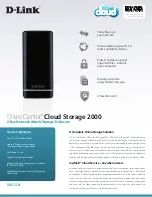
1
Introduction
Power-over-Ethernet (PoE)
eliminates the need to run VAC power to other devices on a
wired LAN. Using a Power-over-Ethernet system installers needs to run only a single
Category 5 Ethernet cable that carries both power and data to each device. This allows
greater flexibility in the location of network devices and significantly decreases installation
costs in many cases.
There are two system components in PoE—the Power Sourcing Equipment (PSE) initiates
the connection to the second component, and the Powered Device (PD). The current is
transmitted over two of the four twisted pairs of wires in a Category-5 cable.
Power over Ethernet (PoE) follows the IEEE 802.3af standard and is completely compatible
with existing Ethernet switches and networked devices. Because the Power Sourcing
Equipment (PSE) tests whether a networked device is PoE-capable, power is never
transmitted unless a
Powered Device
is at other end of the cable. It also continues to
monitor the channel. If the
Powered Device
does not draw a minimum current, because it
has been unplugged or physically turned off, the PSE shuts down the power to that port.
Optionally, the standard permits Powered Devices to signal to the PSEs exactly how much
power they need.
The
CWGE2FE8MSPOE
Managed Switch is one of the ComWorx multi-port switches that
can be used to build high-performance switched workgroup networks. Any one of the
switches is a store-and-forward device that offers low latency for high-speed networking. It
also features a “store-and-forward “switching scheme. This allows the switch to auto-learn
and store source addresses in an 8K-entry MAC address table. The switch is targeted at
workgroup, department or backbone computing environment.
Summary of Contents for CWGE2FE8MSPOE
Page 7: ...v Appendix 134 Console Port Pin Assignments 134...
Page 70: ...63 Syslog Configuration interface...
Page 72: ...65 SMTP Configuration interface...
Page 74: ...67 Event Configuration interface...
Page 79: ...72 IP Security interface...
Page 82: ...75 Port Statistics interface...
Page 84: ...77 Port Control interface...
Page 94: ...87 State Activity of Switch 2...
Page 105: ...98 Group Configuration interface You can modify the VLAN group name and VLAN ID...
Page 108: ...101 RSTP System Configuration interface...
Page 110: ...103 RSTP Port Configuration interface...
Page 112: ...105 SNMP System Configuration interface...
Page 118: ...111 QoS Configuration interface...
Page 127: ...120 802 1x System Configuration interface...
Page 134: ...127 All MAC Address interface...









































